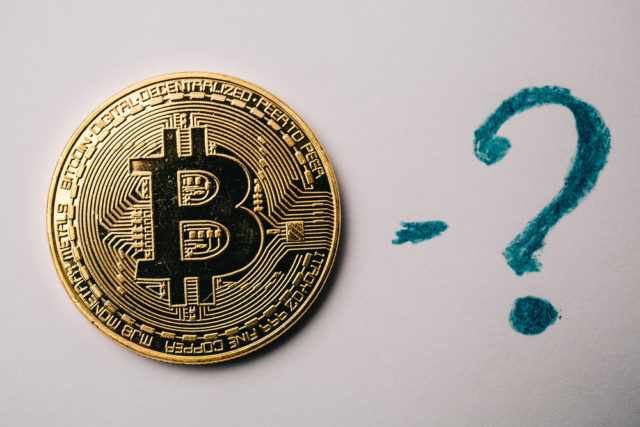How Many Bitcoins Are There Right Now? Everything You Need To Know In 2024
Uncover the truth! This post answers how many bitcoins are there in 2024, explores the impact of scarcity, and predicts what's next.
Author:James PierceReviewer:Camilo WoodFeb 09, 202441 Shares40.6K Views

A maximum of 21 million Bitcoinswill ever be created, making this leading cryptocurrency a limited resource. But how many bitcoins are therein circulation? This guide delves into the mechanics behind Bitcoin's circulating supply, the daily addition of new tokens to the market, and the timeline for Bitcoin to hit its ultimate cap.
How Many Bitcoins Are There

Out of the total 21 million bitcoins that can ever exist, not all have been brought into existence through mining. This means that the entire 21 million bitcoin supply has not been fully generated as of yet. As of this writing, approximately 19.6 million bitcoins are in circulation, a figure referred to as the circulating supply.
The limit on the overall supply is a key aspect of the Bitcoin protocol, intentionally established to induce scarcity and avert inflation.
Scarcity
The cap of 21 million bitcoins mirrors the finite nature of precious metals such as gold, introducing scarcity. This scarcity plays a significant role in enhancing the asset's store-of-value characteristics.
Some Bitcoin advocates suggest that as Bitcoin experiences halvingevents, which decrease the rate at which new bitcoins are issued, its scarcity could lead to an increase in value, especially if the demand for it continues to rise.
Inflation Management
Conventional fiat currencies, such as the US dollar, are prone to inflation because central banks have the ability to mint additional money, which can result in a reduction of purchasing power.
The fixed limit of 21 million bitcoins guarantees that no more than this number will ever exist. This finite availability and predictability aim to serve as a safeguard against inflation and the devaluation of currency.
Process Of Creating Bitcoin
The creation of new bitcoins occurs through a process known as 'mining'. In this process, miners tackle intricate mathematical challenges to verify transactions and incorporate them into the blockchain. As compensation for their work, miners are awarded new bitcoins as a reward for each block they successfully process.
Process Of Bitcoin Mining
To illustrate the concept in simple terms, imagine you challenge your friends to guess a number between 1 and 100. They don’t need to identify the precise number but must be the first to propose a number that is less than or equal to the number you're thinking of.
Suppose your chosen number is 19, and one friend guesses 21, another 55, and another 83; they all lose because their guesses were above 19. However, if among the remaining friends, one guesses 16, they are declared the winner, and the others lose their opportunity to guess.
The reason is that the friend who guessed 16 was the first to choose a number that is less than or equal to 19.
In this scenario, the number you selected, 19, symbolizes the target hash that the Bitcoin network sets for a block, while the guesses made by your friends represent the attempts by miners.
Bitcoins Left To Be Mined
As of this writing, around 1.4 million bitcoins are yet to be mined from the total limited supply of 21 million. The final bitcoin is anticipated to be mined by the year 2140, according to predictions stemming from the Bitcoin protocol's structured issuance plan.
Timeline For The Remaining Bitcoins
The duration required to mine a single bitcoinis determined by the size of the block reward, which is the number of new bitcoins awarded to cryptocurrency miners for creating a new block.
- When Bitcoin was initially mined in 2009, the block reward was set at 50 bitcoins per block, meaning 50 bitcoins were released with each block.
- Roughly every four years, or after 210,000 blocks have been mined, the block reward undergoes a halving. The inaugural halving took place in 2012, diminishing the reward to 25 bitcoins per block.
- The subsequent halving happened in 2016, cutting the reward down to 12.5 bitcoins per block.
- The third reduction took place in 2020, decreasing the block reward to 6.25 bitcoins.
- Halving events are set to proceed until the total supply cap of 21 million bitcoins is achieved.
Following this halving timeline, miners will see a progressive reduction in block rewards until it diminishes to zero, projected to occur by the year 2140. After this, the creation of new bitcoins via mining will cease, and miners will then earn compensation only through transaction fees for their role in maintaining the network's security.
Bitcoins That Have Been Lost
Estimating the precise amount of bitcoins that have been lost is challenging, as Bitcoin transactions are conducted under pseudonyms without a central entity to monitor ownership or the loss of coins.
Nevertheless, it is widely recognized that bitcoins have gone missing over time for several reasons, including:
- Missing Private Keys - A number of early Bitcoin users have likely lost access to their bitcoins due to misplaced private keys or the loss of the hardware where these keys were kept.
- Inaccessible Wallets -There are instances where bitcoins were sent to wallets that can no longer be accessed or that were known to have vulnerabilities, leading to losses.
- Neglected Wallets - In the early stages, Bitcoin wallets were not particularly user-friendly, leading some people to forget about the wallets they had set up or the bitcoins they had deposited in them.
- Owners Who Have Passed Away -There have been instances where Bitcoin owners died without passing on their private keys or the necessary recovery details, making those bitcoins irretrievable.
- Intentionally Destroyed Coins -Certain bitcoins have been deliberately made unspendable by being sent to addresses for which no private key is known, effectively 'burning' them.
Although pinpointing the precise number of lost bitcoins is difficult, different assessments indicate that a substantial part of the total supply might be irretrievable or remain unused. These vanished coins add to Bitcoin's scarcity since they are essentially taken out of circulation, which could influence the dynamics of supply and demand.
Bitcoin Whales
Early participants in the Bitcoin market hold a considerable share of the bitcoins in circulation. These investors, often referred to as "whales," possess enough bitcoins to influence the market dynamics with their trading activities.
Currently, around 1,600 such entities control roughly 5 million of the bitcoins available, which is about 28% of the entire supply.
The alleged creator, or creators, known as Satoshi Nakamoto, has possessed 1 million bitcoins in their wallet since the creation of Bitcoin, without transferring any. While some whales do engage in selling or spending their bitcoins, they primarily retain the majority of their holdings, effectively withdrawing those bitcoins from circulation.
Frequently Asked Questions - How Many Bitcoins Are There
Why Is BTC Falling?
"The market is witnessing an unexpected downward trend as BTC faces selling pressure due to heavy outflows from ETPs to new spot ETF issuers," said Shivam Thakral, CEO of BuyUcoin. Cryptocurrency markets were trading lower in Friday's trade due to heavy outflows in ETFs.
Can Bitcoin’s Supply Limit Change?
No, Bitcoin’s Supply Cap Cannot Change. The primary reason Bitcoin's supply limit is unchangeable lies in its foundational design, encompassing the rules governing its community, as well as the incentive structure for miners.
What Happens If I Lose My Bitcoin?
While individuals have come to trust several crypto wallets and exchanges in order to carry out transactions securely, if your crypto assets are lost, hacked or stolen, there is usually no way to recover your funds.
Conclusion
Understanding "how many bitcoins are there" provides crucial insight into the cryptocurrency's design and its future. With a hard cap set at 21 million, Bitcoin remains a finite digital asset. As of now, the majority of these coins have been mined, leaving a diminishing number yet to be introduced into circulation. As the landscape of digital currencies continues to evolve, the fixed supply of Bitcoin will undoubtedly remain a central point of discussion and analysis for investors, enthusiasts, and critics alike.

James Pierce
Author

Camilo Wood
Reviewer
Latest Articles
Popular Articles

